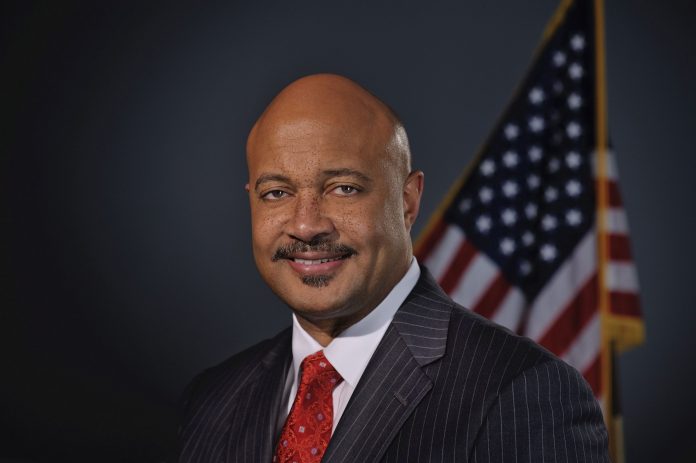Last September, over pancakes at a diner in central Massachusetts, Molly Baldwin told her husband, Jonathan, they were going to have a baby. He cried into his coffee mug, elated, and a little surprised. They had only been trying for about a week, and they had yearned for a summer baby, ideally in June, which would enable their parents to spend more time with their first grandchild.
“We thought we had the best timing,†she said.
But as the novel coronavirus began to spread through the country this year, Baldwin realized in early March that it was only a matter of time before the virus hit her town, Fitchburg, and the nursing home where she’s a social worker. Her patients would be among the most vulnerable: Some had battled addiction, many had experienced homelessness and most were elderly. Flu seasons were always hard on her patients, and she dreaded the havoc a more lethal disease would wreak.
Baldwin also worried about her baby. She spent hours looking up the prenatal effects of COVID-19, and the lack of evidence-based research concerned her. She called her obstetrician, who cautioned that because of the unknowns, she should consider working from home to limit her exposure to the virus.
So Baldwin made a plan for when COVID-19 arrived at her nursing home: She would swap shifts with a colleague to work fewer hours and request to work from home, as many of her duties are paperwork or computer-based.
She would work from the comfort of her kitchen table. She would avoid catching the virus. She would keep visiting her doctor until it was time to deliver, her belly swelling with a baby girl she knew was healthy and safe.
None of it, not a single thing, would go according to plan.
Baldwin said her supervisor and the human resources representative from the facility verbally agreed in mid-March to let her work from home. (Baldwin spoke with ProPublica on the condition that her workplace not be named; ProPublica contacted her employers with questions for this story.)
Then, on April 16, one of the residents at her facility tested positive for the virus. Baldwin sought testing at a walk-in clinic, and the results came back negative. But when she called her obstetrician’s office, she got a warning: If she continued to work at the facility, potentially exposing herself to the virus, they would not allow her to enter their office for prenatal appointments unless she could prove with a test, before each visit, that she was negative for COVID-19.
She understood their caution; her job was beginning to feel at odds with her pregnancy. It was time for her work-from-home plan to go into action.
She called her employer and asked to start the accommodations she had requested the month before. But they told her that now the plan would not be feasible, she said. Other pregnant employees were continuing to work at the facilities, and she would have to as well, she said she was told.
“The services provided at a nursing home do not typically allow for remote working,†a company spokesperson told ProPublica. “However, we have made changes to accommodate our staff whenever possible, provided there is no impact on patient care.â€
After finding out her request to work from home would not be granted, Baldwin panicked. “I’m not even a mom yet,†she said. “This is my first baby, and I already feel like I’m doing everything wrong.â€
Baldwin is one of the dozens of pregnant workers who ProPublica has heard from who are navigating the risks of COVID-19 while in the field of health care.
“There are plenty of pregnant women across the country who are trying to figure out what to do to protect themselves, given the uncertainty,†said Emily Martin, vice president for education and workplace justice at the National Women’s Law Center. “If you feel like you can’t do your job because there aren’t certain accommodations and you feel like you’re at risk, it’s difficult to see where to go next.â€
About half of the states have laws that allow pregnant women to request reasonable accommodations, including Massachusetts, Martin said.
According to the Massachusetts Pregnant Workers Fairness Act, signed into state law in July 2017, employers must grant reasonable accommodations to their pregnant employees that allow them to continue to do their job, “unless doing so would impose an ’undue hardship’ on the employer.†An employer also “cannot make an employee accept a particular accommodation if another reasonable accommodation would allow the employee to perform the essential functions of the job.â€
Both the Centers for Disease Control and Prevention and the American College of Obstetricians and Gynecologists have stated that based on the data available, pregnant women do not face a higher risk of infection or severe morbidity related to COVID-19. That said, both the CDC and ACOG have suggested that health care facilities may want to consider reducing the exposure of pregnant health care workers to patients with confirmed or suspected COVID-19 if staffing permits.
“In the overwhelming majority of pregnancies, the person who is pregnant recovered well with mild illness,†said Dr. Neel Shah, an obstetrician and assistant professor at Harvard Medical School, echoing the current guidance. But, he cautioned, there is a lot we still don’t know about how the virus impacts bodies, let alone those that are pregnant. “We can’t say that it’s completely safe — we don’t know.â€
Baldwin and her husband went through their options.
She couldn’t quit because they needed her paycheck. They had a mortgage, student loans and a new baby on the way. She also loved her job and cared deeply for her patients, whom she wanted to continue to serve. Her employer, trying to manage understaffing, had discouraged employees from taking time off, she said. She didn’t want to take any additional sick days, because she needed to save them for her maternity leave.
They decided that she would have to return to work.
Her employer told her to wear a mask and gloves, use hand sanitizer and remain in her small, boxy office, which has three desks for four people. Though she didn’t have contact with the residents, her office mates still did.
Even though she was scared, she tried to stay optimistic. “I was grateful for what I had because I have friends that are out of work right now,†she said. But she remained perplexed about why her requests had been denied. “I was sitting in my office doing work that would have easily been done from a laptop on my kitchen table.â€
The company spokesperson did not respond to a question about whether it had originally given Baldwin verbal approval to work from home. When asked why she couldn’t have done the same work remotely, he said, “Based on your questions, our HR and Risk Management are anticipating the action and would prefer to not comment at all.â€
The next day, the Massachusetts National Guard delivered testing kits to the nursing home, and every resident was checked for the virus. When the results came back, at least 22 residents and 20 other staff members tested positive.
“We are conducting cleanings and infection control measures multiple times per day, with extra focus on high touch areas,†the company spokesperson said. “We screen and take the temperature of anyone entering our building, and we have increased monitoring of our residents.â€
Public data shows the facility has more than 30 cases among residents and staff, the maximum number that the state reports publicly.
“I thought if I just keep working, stay in my office, use hand sanitizer, wear my mask, go home and shower right away, disinfect my clothes, then I will be fine, and I can keep my baby safe, and I can shed all this guilt,†she said.
Then on April 24, two of her office mates texted to tell her they had the virus.
And that morning, she’d felt a tickle in her throat.
“I know I’m positive,†she thought to herself, as she left work midday and drove to a CVS drugstore testing site an hour away that was offering free rapid tests for front-line and health care workers. Hundreds of cars were already lined up.
She waited alone in her Jeep Wrangler for three hours, wearing her mask as required, which muffled her nagging cough. She shifted around constantly, to keep blood from pooling in her swelling feet. At the front of the line, she received a 6-inch cotton swab, wedged it deep in her nasal cavity, and returned it to the technicians. They directed her into a side parking lot, and 30 minutes later, she got a phone call with her results.
“We’re sorry to tell you that you’re positive,†the voice on the line told her. Baldwin’s mind stalled, engulfed in a wave of anxiety, which gave way to seething frustration.
“This was so preventable,†she said. “Nowhere I am, 33 weeks pregnant and positive. My most important job is to keep the baby safe, and my actual job wasn’t making that happen.â€
When she called her co-workers and supervisor to tell them she tested positive, she said they were “all very caring and compassionate.†They told her to stay home for at least a week, or until her symptoms subsided. The Families First Coronavirus Response Act requires most employers to provide their workers with two weeks of paid leave if the employee is quarantined or experiencing COVID-19 symptoms. Baldwin said she would have to exhaust her sick days first; she’d been saving them for her maternity leave. Her husband, who works as a correctional officer at a county jail, was allowed to take 14 days of paid leave to tend to his wife, without using his own sick days.
She could no longer go to her normal obstetrician for in-person appointments, and instead, she would have to rely on telemedicine. Her doctor connected her with an obstetrician specializing in COVID-19 cases, with whom she planned to meet this week.
Last Saturday, Baldwin’s mother had planned to throw her daughter a baby shower. She had invited 50 of their closest friends to celebrate at a new restaurant and had ordered dozens of pink favors from Etsy.
Because of the stay-at-home order, her shower morphed into a drive-by celebration, where her friends and family passed by her house, honking their horns and holding celebratory signs, balloons, and streamers. They dropped gifts in front of her house, including first aid kids and a handsewn pink mask for an infant.
Her symptoms have, so far, been relatively mild, similar to the normal flu: headaches, a stuffy nose, a sore throat and muscle pains. She’s spent most of the past week resting in bed and taking baths to soothe her body aches. While taking care of Baldwin, her husband has also contracted the virus and is experiencing severe body aches as well.
In addition to her disappointment that the hypnobirthing and breastfeeding classes she had signed up for are canceled, her time in quarantine is now filled with anxious questions about how the disease may impact her baby.
Will the stress of this experience damage her baby neurologically? Will her baby be born early? Will she have to deliver by cesarean section to relieve pressure on her body and lungs, like so many stories she had read? Will she have to be secluded from her baby for days or weeks after birth? And what if her own symptoms worsen?
“This is our first baby, and it was so planned and wanted,†she said. “But had we known this awful thing would happen, would we have tried when we did?
FOOTNOTE: ProPublica is a nonprofit newsroom that investigates abuses of power. Sign up to receive our biggest stories as soon as they’re published.








